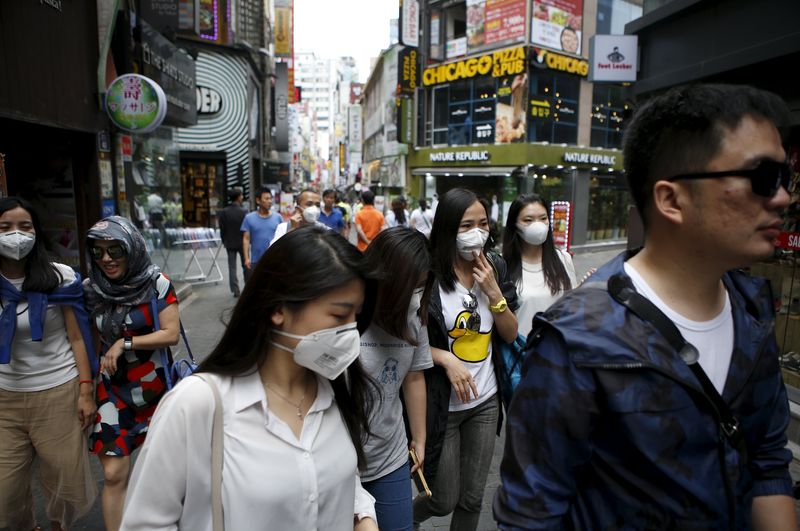(Bloomberg) -- The coronavirus might infect as many as 10,000 people in South Korea at what could be a peak next month, according to a report from JPMorgan Chase (NYSE:JPM) & Co. citing its insurance team’s epidemiology model.
That scenario assumes a 3% initial exposed group out of about 2.4 million people in Daegu Metropolitan City and a secondary infection rate based on China’s experience with the virus, analysts led by JJ Park wrote in the note dated Feb. 24.
The epidemic has frustrated previous efforts to predict how it might develop around the world and has made global financial markets more volatile. While health statisticians have tried to predict the peak number of infections in China and elsewhere, the calculations have been made more challenging by government containment measures and travel restrictions that help slow the spread, plus a lack of full understanding of how the highly-infectious pathogen is transmitted.
South Korea is emerging as a coronavirus hot spot in Asia, with infections jumping to 1,146, from only 51 a week ago. The fallout from the epidemic threatens the nation’s fragile economic recovery, and data Wednesday showed that manufacturers’ confidence slumped the most in five years.
JPMorgan (NYSE:JPM) said that given the “sudden and substantial increase in infected cases,” it sees further downside risks for economic growth. It expects the Bank of Korea to cut its base rate by 25 basis points in February to a record low of 1%.
Read about how the virus affects the outlook for downgrades in Korea
The virus outbreak has killed thousands in China and shut down parts of the economy there. China’s economy is forecast to grow the slowest since 1990 according to the median of recent economists’ reports.
In Korea, potential disruptions from the virus in the supply chain, domestic consumption, exports and incoming travelers could hurt sectors including banks, casinos, consumers, autos, petrochemicals and technology, according to the JPMorgan (NYSE:JPM) report.
